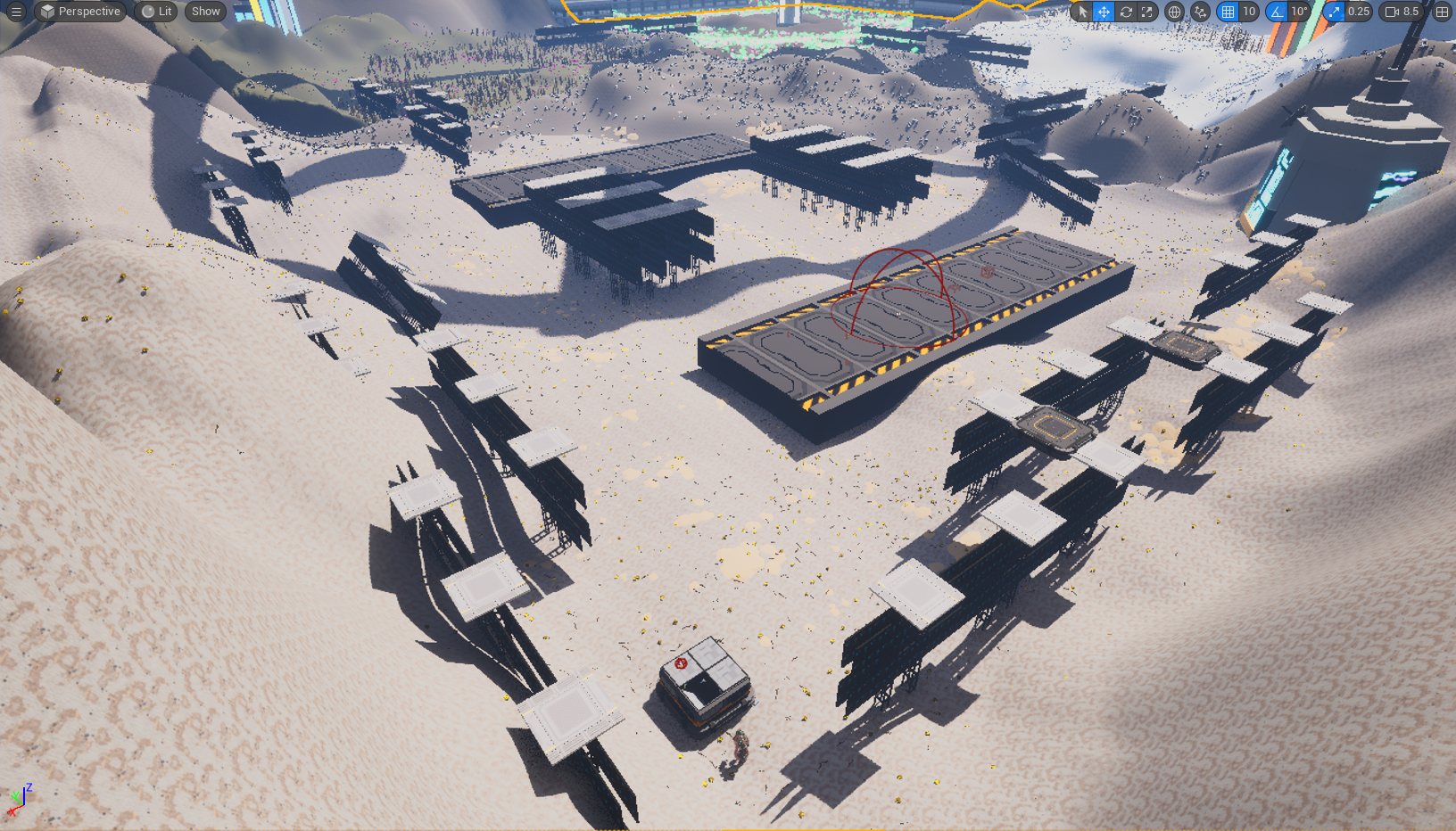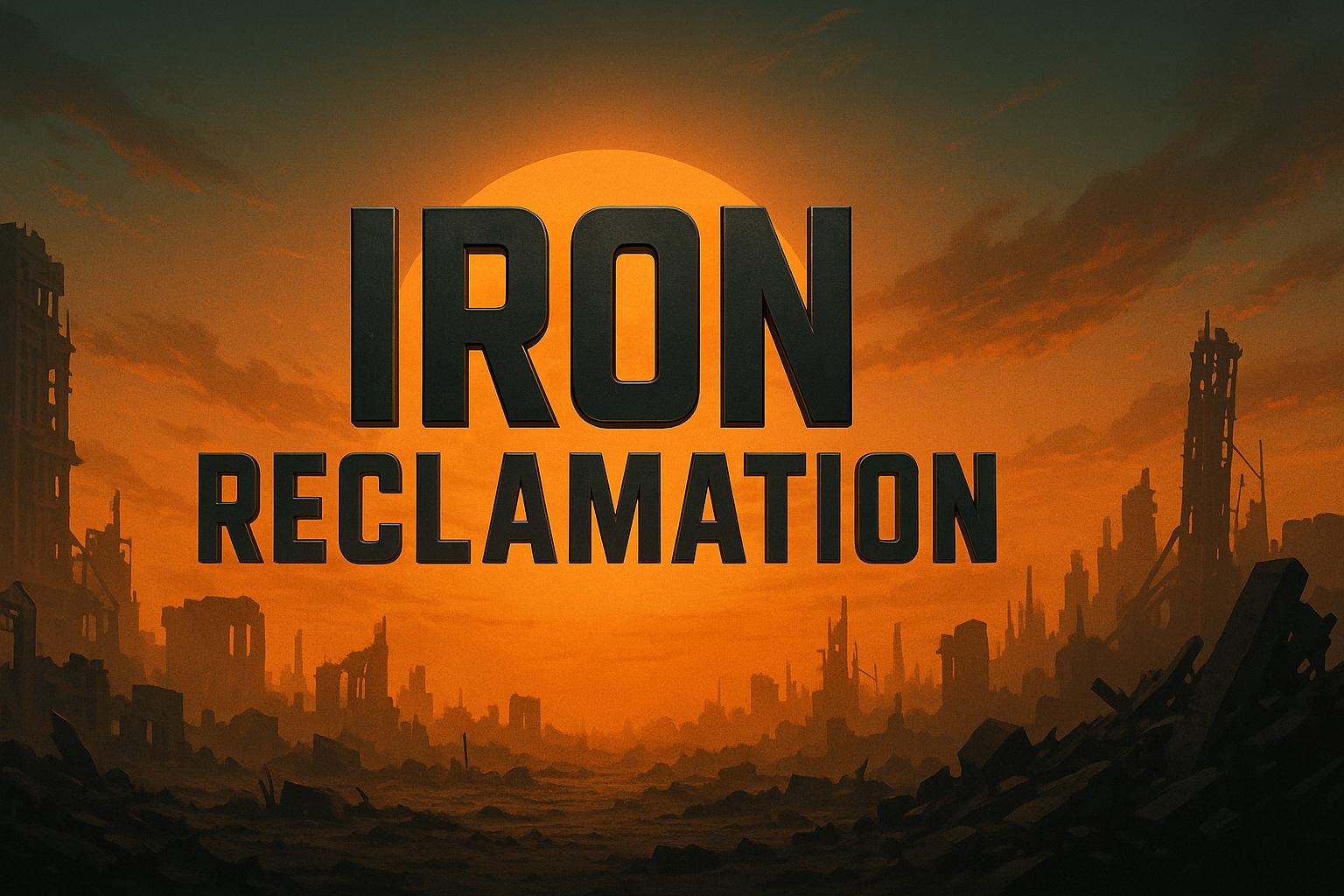From Continent to Contained: Learning to Build a World That Works
Hey everyone, and welcome back to the devlog!
In last week's post, I talked about the classic programmer-turned-designer pitfall: I built a continent when what we needed was a level. It was a massive, ambitious, and ultimately paralyzing world that, while cool in theory, was completely impractical for our game.
Where we left off: A map that was big, but not necessarily better.
The big takeaway was that we needed to scale back and find the "right size." This week, I dove headfirst into that challenge. My goal wasn't just to make the map smaller, but to learn how to properly use the tools at my disposal in Unreal Engine to build a world that felt alive, supported our gameplay, and was actually manageable for our small team.
It's Not Magic, It's Tools
My first attempt at map-making was pure brute force—a lot of manual sculpting and object placement. This time, I took a step back to actually research Unreal's landscape and foliage systems. It was a game-changer.
Instead of hand-placing thousands of trees and rocks, I learned to use procedural foliage tools to "paint" entire ecosystems. This allowed me to create dense, organic-feeling forests and plains in a fraction of the time. It's how we went from vast, empty fields to areas that feel rich with detail and provide natural cover for gameplay.
Learning to let the engine do the heavy lifting was a huge step forward.
Designing with Purpose
With a better handle on the tools, the focus shifted to creating a space that served a purpose. Our "continent" had biomes, but they were disconnected. The new map is designed as a single, cohesive location with distinct zones that flow into one another. We have a snowy mountain outpost, a sprawling desert testing ground, and a dense, futuristic city center.
Each zone now has a distinct identity and purpose.

Every part of the map was built with our game's systems in mind. We designed sightlines for combat, open spaces for exploration, and chokepoints for tactical encounters. We even added major points of interest, like this orbital station, to give players landmarks to navigate by and mysteries to investigate.
The Goldilocks Zone
After a week of focused learning and building, this is where we've landed.
The new map: all of the ideas, none of the bloat.
This new map is everything the old one wasn't. It's dense, detailed, and full of opportunities for gameplay. It’s large enough to encourage exploration and make the world feel substantial, but small enough that players are never far from the action. All of our core systems are integrated, and more importantly, it's a space that we can realistically fill with content.
This journey from a coder fumbling with design to someone who can build a functional, engaging level has been incredible. It's proof that with some time, research, and a willingness to learn, you can absolutely bring the world you're imagining to life.
Thanks for following along! Now that the foundation is set, we can get to the really fun part: populating it. See you next time!
Get Iron Reclamation
Iron Reclamation
| Status | Prototype |
| Author | LGHTS |
| Tags | First-Person, Real time strategy, Singleplayer |
More posts
- Making Combat Feel Good: Fair, Readable, and Responsive AI23 days ago
- Problems With Transferring Materials From One Mesh to Another Mesh23 days ago
- When Customization Gets Complicated: Working with Character Assets in Unreal23 days ago
- Some Tips for UE523 days ago
- Hitting the "Impossible" Deadline: How 5 Programmers Used Process to Beat the Cl...23 days ago
- Bone to Bone: Animation Trouble29 days ago
- When a Simple Menu Isn’t So Simple: Building an Options Menu in Unreal29 days ago
- Better Isn't Always Best: Choosing the Right Tool Under a Sprint Deadline29 days ago
- Perfection Isn't Perfect30 days ago

Leave a comment
Log in with itch.io to leave a comment.